Falong Zee: Explore the magical flavours of Rakhine cuisines
At Cox’s Bazar’s Kyang Para, situated on the Buddhist Temple Road, you can not only immerse yourself in the serenity of the Aggamedha Kyrung Buddhist Monastery, but also enjoy the authentic and traditional Rakhine cuisines, offering a unique and intriguing experience.
Falong Zee: Explore the magical flavours of Rakhine cuisines
At Cox’s Bazar’s Kyang Para, situated on the Buddhist Temple Road, you can not only immerse yourself in the serenity of the Aggamedha Kyrung Buddhist Monastery, but also enjoy the authentic and traditional Rakhine cuisines, offering a unique and intriguing experience.
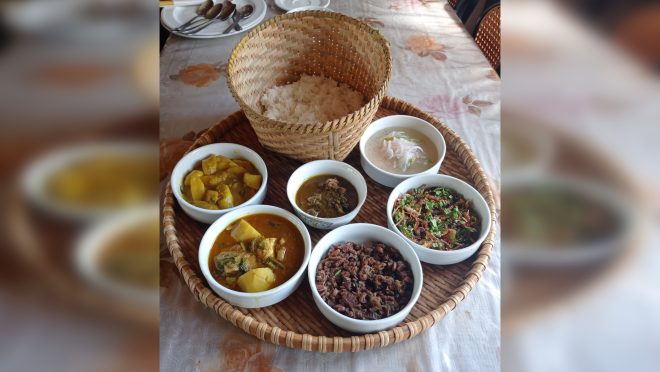
Is a trip to Cox’s Bazar merely about sunbathing on the world’s longest sea beach, cruising along Marine Drive, and relishing seafood?
Far from it.
Cox’s Bazar opens the door to a treasure trove of history and culture for those keen on peeling back the layers of time and exploring the lives of the region’s inhabitants, spanning thousands of years.
Particularly, a visit to Kyang Para, situated on the Buddhist Temple Road, is highly recommended. Here, you can not only immerse yourself in the serenity of the Aggamedha Kyrung Buddhist Monastery, but also enjoy the authentic and traditional Rakhine cuisines, offering a unique and intriguing experience.
At the moment, the best place to try Rakhine cuisines in the vicinity is unarguably Falong Zee — a cosy eatery, managed by a local family, boasting charming decor that creates a warm and inviting atmosphere.
Let’s discover the exquisite array of Rakhine delicacies at Falong Zee.
Bhapa Ilish
Bhapa, or steamed hilsa, is undeniably a staple in Bangladeshi traditional cuisine. However, imagine if I told you that this dish could become even more delectable with a touch of Rakhine influence. I might be pushing boundaries here, but every word of what I have said holds true.
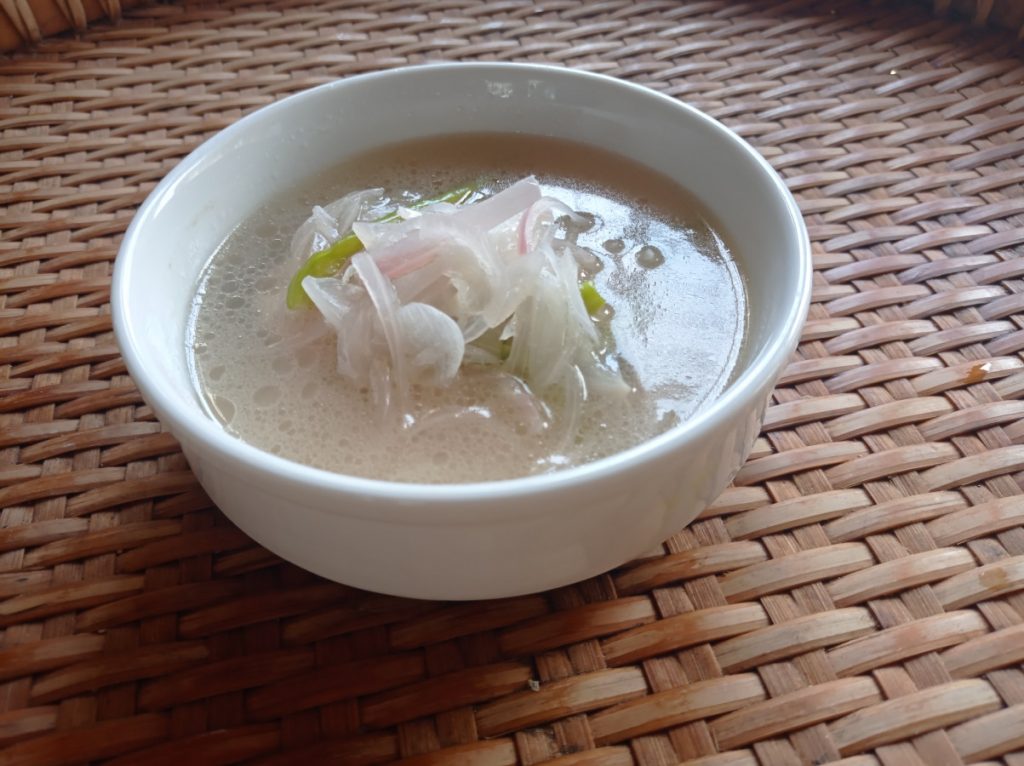
At a glance, you might not even recognise it as a fish dish. The reason is clear: this steamed hilsa lacks any elaborate spices. It simply consists of a well-cut piece of sea hilsa, complemented by green chilli, lemon, and an ample amount of onions. As a result, the dish not only resembles a coconut milk-based delicacy due to its pale appearance, but it also retains the authentic flavour of hilsa.
And that flavour, as I have already hinted previously, is truly divine. It is so delightful that even after finishing the fish and rice (cooked with katari bhog rice), you will find yourself unable to resist savouring the ghastly gravy as if it were a soup!
Chaa Patar Salad
The revelation that tea leaves are consumed as a vegetable delicacy in the regions where they grow in abundance often leaves many people astonished. I too experienced this surprise during my initial encounter in Sreemangal several years ago.
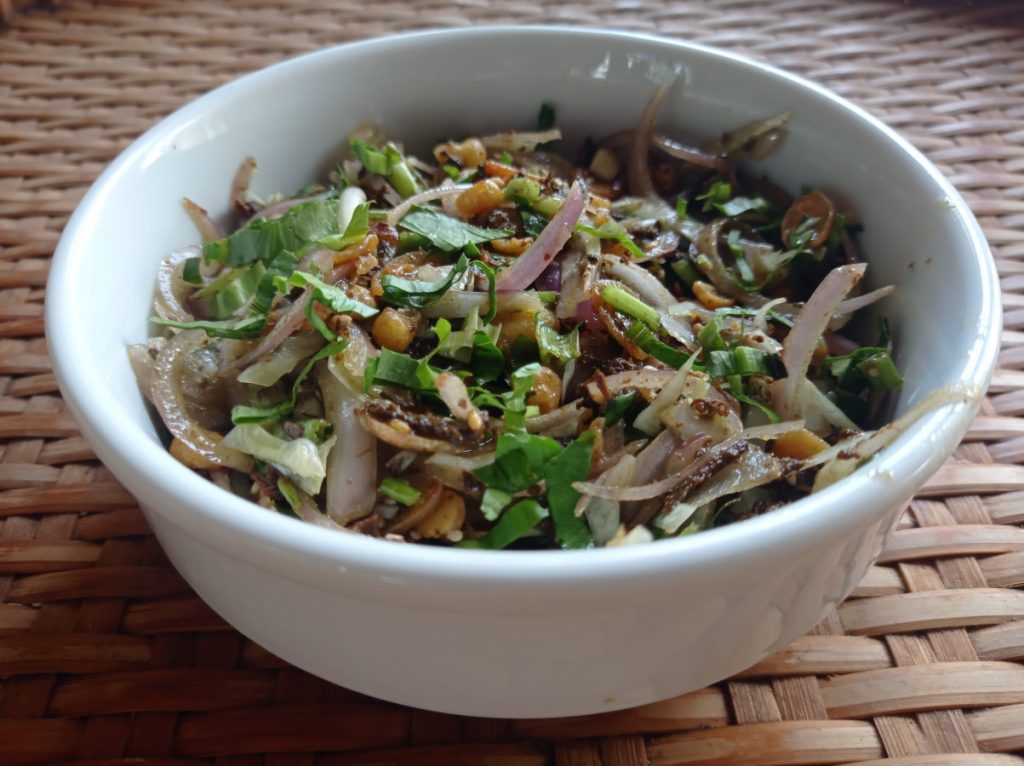
However, over time, it has become one of my cherished delights to savour, particularly in the scenic hill tract areas.
But of course, the tea leaves salad in Falong Zee is not just about tea leaves. It also contains various kinds of nuts, peas, onions, green chilli as well as the marinade-released tea leaves’ oil.
As a result, the dish is not only extremely pungent, but the combination of various nuts adds a satisfying crunch, while the peas contribute a subtle sweetness that complements the overall flavour profile.
Pahari Deshi Murgi
It is beyond any doubt that deshi murgi (indigenous chickens) taste thousands times better than their broiler counterparts. And if you have ever tasted the hilly indigenous chickens, you might probably agree that the hilly species taste even better than the regular ones.

Once again, the appeal of this dish lies in its simplistic approach. Nothing overpowers the senses even with the application of multiple spices. However, the distinct flavour of fresh turmeric combined with green chilli is what truly sets it apart, enhancing the intense taste with a slightly gamey undertone.
Like all indigenous chickens, the chicken at Falong Zee is also leaner and slightly tougher. Unlike most other dishes in the restaurant meant for sharing between two people, it might be wise not to adhere to the same idea with this particular dish, which offers two moderately-sized pieces.
Pahari Aloo
Hilly potatoes are becoming increasingly scarce, even in many hill tract regions. So, this is probably one of the rarest food items you will find in this restaurant. But even if you are familiar with hilly potatoes, the ones served at Falong Zee are undoubtedly distinct.
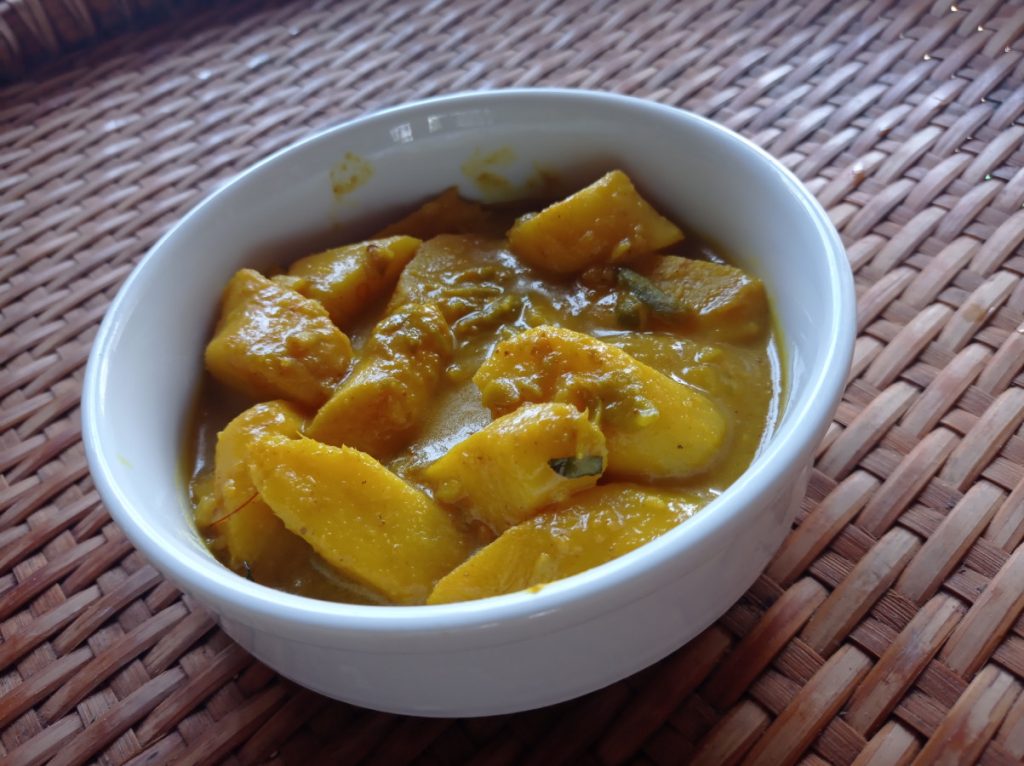
Here, the inherent robust flavour of hilly potatoes is further intensified by the tartness of lemon and the addition of dry shrimp. The resulting dish embodies a one-of-a-kind fusion of tanginess and earthiness, complemented by a refreshing and tangy aroma.
But beware, if you expect something along the lines of our Bangali traditional Aloor Dum, you are in for a disappointment.
Kola Gachh
Contrary to its name, the dish doesn’t entail cooking an entire banana tree; rather, it spotlights the Baguli, the tender interior of the tree.
Different from the well-known Bangali Mocha, this particular preparation showcases banana trees cultivated in the hills, offering a distinctive flavour.
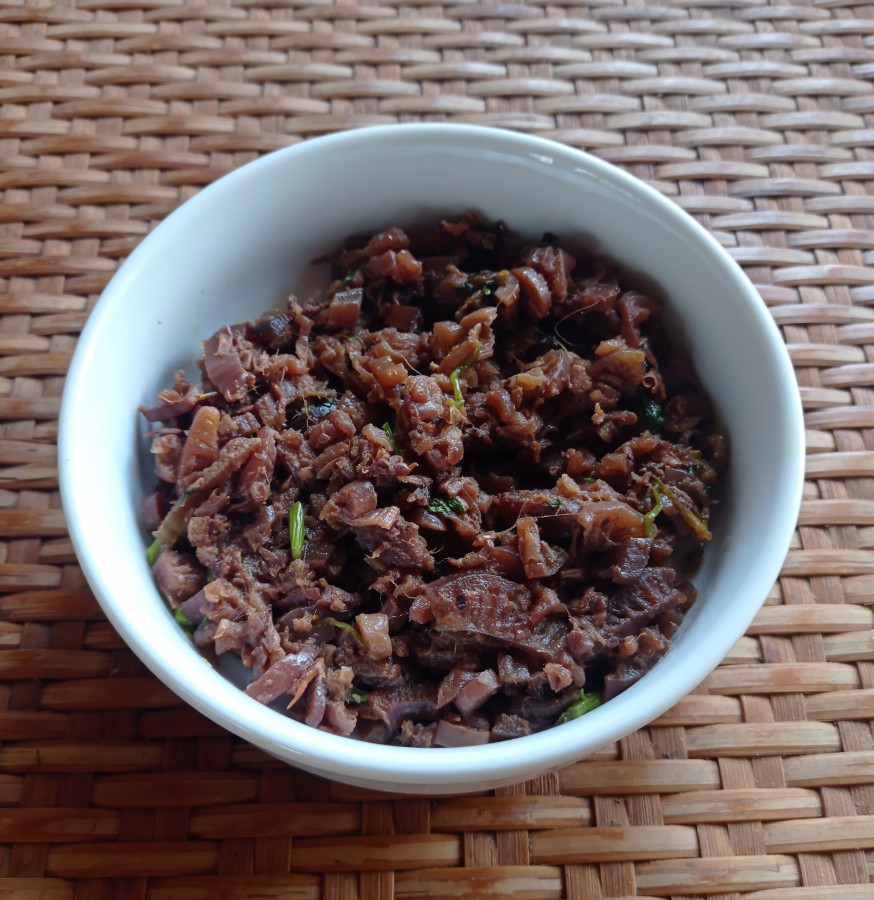
Initially, the robust essence might catch you off guard, while the aroma might also prove overpowering for your senses. However, as you grow accustomed to it, you’ll find yourself savouring its unique taste.
Here’s a secret: The taste was so unfamiliar that I couldn’t even distinguish any other ingredients in it besides the small pieces of Baguli!
Tin Mishali Bharta
This mixed vegetable item is like a magic box, because you will never know what the three vegetables are going to be. But the day we visited the restaurant, it was quite literally a true explosion of delightful flavours.
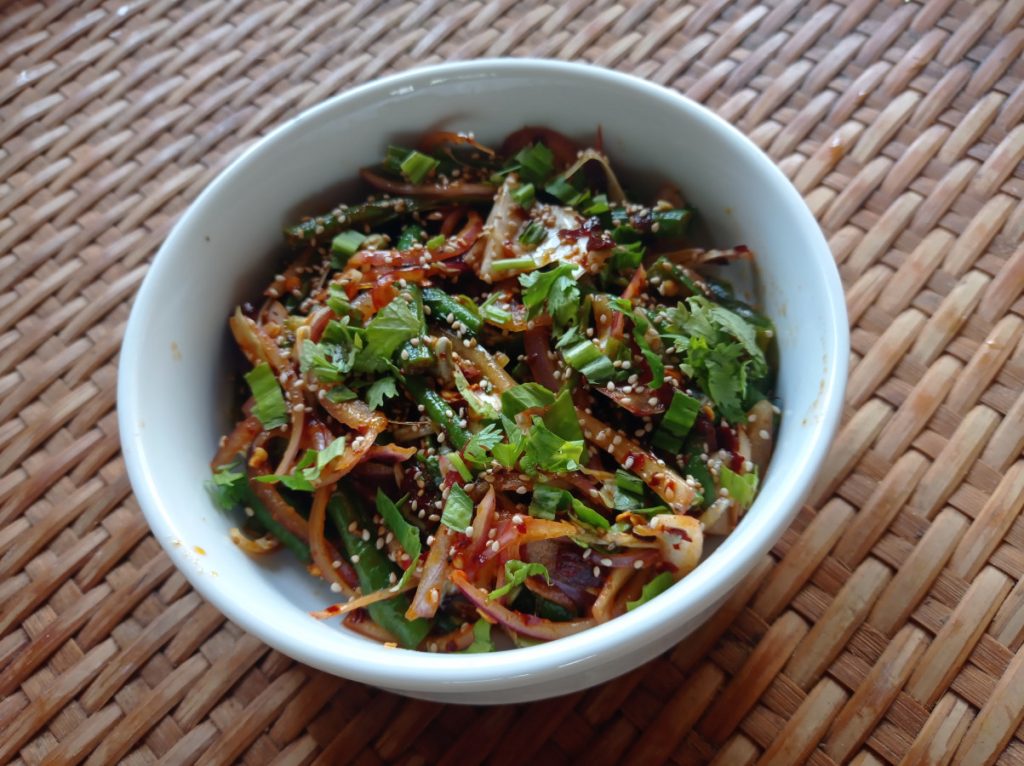
There were yardlong beans, cabbage and sesame as the main three vegetables. There also was the thoughtful inclusion of fresh coriander leaves, which effortlessly elevated the dish’s overall profile, adding a refreshing and aromatic note to the medley of flavours.
Additionally, rather than utilising any other edible oil, the marinade-released sesame oil was employed for cooking this dish, which not only retained the essence of the ingredients but also imparted a subtle nutty undertone to the ensemble.
The result was a dish that truly honoured the genuine flavours of the individual components. For those following a vegetarian diet, this single dish alone has the power to brighten the entire day, offering a blend of surprise, flavour, and wholesome satisfaction.


